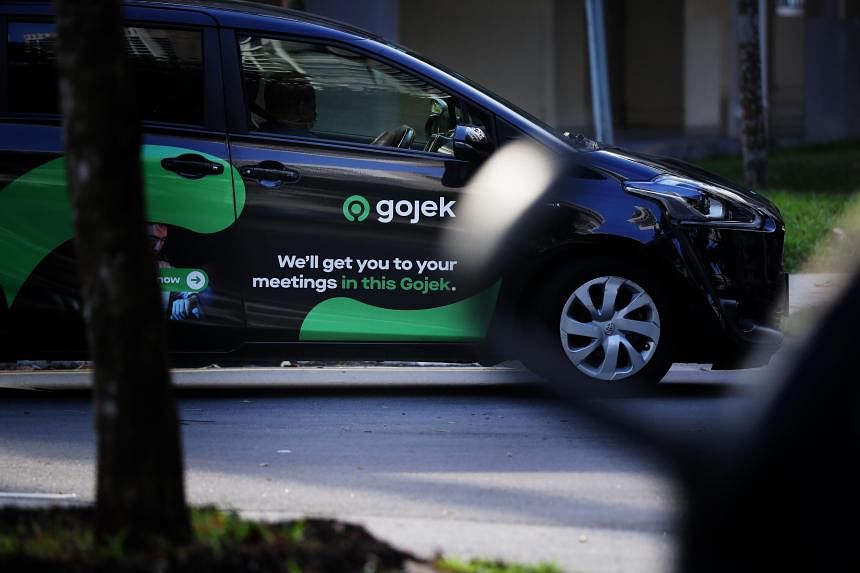SINGAPORE – A “mission” on social media meant to “motivate” private-hire vehicle (PHV) drivers, by finding the top earner in a day, has drawn flak from netizens who said it put drivers, passengers and other road users at risk.
Organised by Mr Shawn Lee, a PHV driver himself, “4sMission500” was posted on Nov 17 on a public Facebook page – with more than 34,000 members – for drivers from various platforms.
The top-earning eligible driver in the period between 12.01am and 11.59pm on Nov 18 would get a two-day-one-night stay at Hotel Ora at Resorts World Sentosa, paid for by Mr Lee. He invited drivers of four-seater vehicles who hit a minimum of $500 in earnings that day to message him the full sum earned privately to be in contention.
Mr Lee’s intention was to lift the spirts of the local PHV driver community, which he said had been grappling with rising costs and reduced incomes.
The 50-year-old Gojek driver told The Straits Times he did not anticipate that the winner of the challenge – a “James Lim”, who also drives a Gojek car – would spend 22 hours on the road that day, earning $1,017 over 48 trips.
He said he was “shocked” when he saw Mr Lim’s hours, adding that he had set a $500 benchmark as he knew that would be “achievable within 12 to 13 hours”.
“But I didn’t expect someone would chiong (Hokkien for go all out) to break their own record by doing that high,” added Mr Lee.
After verifying Mr Lim’s efforts in a face-to-face meeting, Mr Lee posted screenshots of the winner’s earnings on Nov 19, along with those of nine other participants who made more than $500 during the challenge. Three of the top four were Gojek drivers, while the rest drove Grab cars.
The second- and third-placed drivers drove “around 16 to 17 hours” to earn $831 and $778, respectively.
Mr Lee’s post announcing Mr Lim’s 22-hour “shift” generated plenty of discussion, and was reposted on other online platforms.
Facebook user Eugene Yeo commented: “Well done and congrats. But please do not do this often. 22hr OTR (on the road) is no joke. Fatigue sets in and risk increases as you go further and further exponentially.”
In reposts outside the PHV drivers’ group, reactions to Mr Lee’s mission were more negative, with some tagging the authorities such as the Land Transport Authority and Ministry of Manpower (MOM).
On the SG Road Vigilante-SGRV Facebook page, user PJ Soh wrote: “Dumbest KPI, risking passengers’ life (sic).” KPI refers to key performance indicator.
Singapore Road Safety Council chairman Bernard Tay told ST that drivers need to be focused and should have sufficient rest.
“We are driving in a city state and there are many road users on our roads,” he said. “If you drive 22 hours continuously without rest, you may be putting yourself and other road users at unnecessary risk.
“Driving such long hours should not be encouraged because it may impair vision and slow down your reflexes in an emergency.”
He noted that there is no guideline on the number of hours a motorist can be on the road since there are various factors at play, like the weather, distance, terrain, and whether the driver is driving for work or leisure.
Mr Tay recommended that, in general, drivers should take a 15-minute break after driving for 1½ to two hours, and should not exceed eight hours of driving a day.
A Gojek spokeswoman said safety is its top priority and that it has initiatives to ensure its driver-partners are aware of safe driving practices, including a learning management system featuring modules that cover safety.
“We do not encourage driver-partners to drive for long hours without taking sufficient breaks,” she added.
“To encourage driver-partners to get sufficient rest, we have introduced a rest reminder feature on our driver app, which regularly reminds drivers to take a break or go offline after they have been online for a certain number of hours.”
In response to queries from ST, Grab said it has a “fatigue nudges” safety feature on its app that reminds drivers to take a break after a long stint.
PHV drivers, like other gig workers, are not covered under the Employment Act, which states that employees are not allowed to work more than 12 hours a day, except under specific circumstances.
MOM guidelines on preventing fatigue among drivers include recommendations to limit shifts to no more than 12 hours including overtime, and scheduled breaks such as 15 minutes for every two hours on the road.
In a written reply to Parliament on July 6, 2021, Minister for Manpower Dr Tan See Leng said: “The (Workplace Safety and Health) Council considered whether to mandate its recommendations or reduce the current limit of 12 hours of work a day permissible under the Employment Act. It decided to focus instead on addressing the core attitudes and mindsets towards safety.”
Mr Lee, who has been a PHV driver for almost 10 years, acknowledged that he should have set a cap on the number of hours for participants in his initiative.
He explained that the winner told him that he had had a full day of rest before the 22-hour effort, and in addition to a two-hour break, was resting in the car when there were no bookings.
He said PHV drivers are aware that their own lives and passengers’ lives are in their hands, and added: “We all know how to manage our break time and rest enough.”
- Additional Reporting by Ian Cheng

